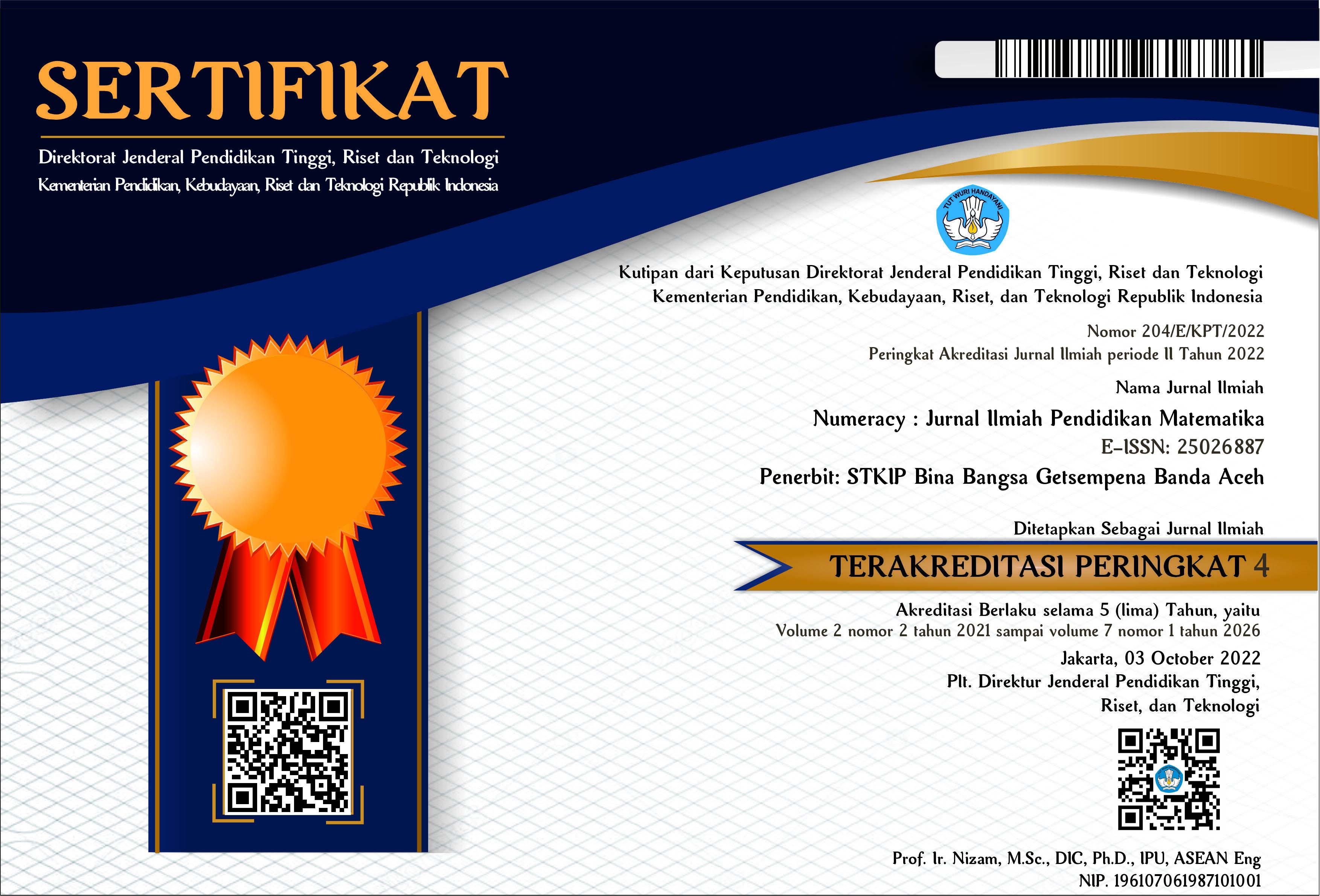PENERAPAN PEMBELAJARAN MATEMATIKA REALISTIK MATERI SISTEM PERSAMAAN LINIER TIGA VARIABEL PADA SISWA SMA INSHAFUDDIN BANDA ACEH
Abstract
The obstacle in teaching mathematics is not only in the level of material difficulty, but in the lack of motivation to learn from within students to learn. For this reason, it is necessary to build a learning design that can build two-way interactions so that learning objectives are achieved. This study aims to build student motivation through a realistic mathematical approach so that students can build their own mathematical concepts in order to feel the benefits of learning. The results of this study indicate that initially changing the concept of learning from a trivial and monotonous strategy to a strategy of constructing your own concept from what students recognize is quite difficult. This is because students are rarely given challenging and unusual learning concepts. But after at least five problem-based learning is done with the problem raised is a realistic problem, it becomes interesting for students. It was found that students can use their own concepts in solving problems, especially problems of linear equation systems.
Abstrak
Kendala dalam mengajar matematika memang bukan saja terletak pada tingkat kesulitan materi, akan tetapi pada kurangnya motivasi belajar dari dalam diri siswa untuk belajar. Untuk itu perlu dibangun suatu disain pembelajaran yang dapat membangun interaksi dua arah agar tujuan pembelajaran tercapai.penelitian ini bertujuan untuk membangun motivasi belajar siswa melalui pendekatan matematika realistik agas siswa dapat membangun sendiri konsep matematika agar dapat merasakan manfaat dari belajar tersebut. Hasil penelitian ini menunjukkan bahwa pada awalnya mengubah konsep belajar dari strategi yang triavial dan monoton ke strategi membangun konsep sendiri dari hal yang dikenali siswa cukup sulit. Hal ini disebabkan karena siswa jarang sekali diberikan konsep belajar yang menantang dan tidak biasa. Namun setelah setidaknya lima kali dilakukan pembelajaran berbasis masalah dengan masalah yang diangkat adalah masalah realistik, hal tersebut menjadi menarik bagi siswa. Ditemukan siswa dapat menggunakan konsepnya sendiri dalam memecahkan masalah terutama masalah sistem persamaan linier.
Kata Kunci: Kebiasaan belajar, matematika realistik, sistem persamaan linier tiga variabel
References
Gravemeijer, Koeno. 1994. Developing Realistic Mathematics. Utrecht: CD – β Utrecht University. Netherland
NCTM. 2000. Principle and standards for School Mathematics. Virginia: Reston VA. https://doi.org/10.1111/j.1949-8594.2001.tb17957.x
Sari, Intan Kemala., Nasriadi, Ahmad., Salmina, Mik. 2018. Students’ Understanding of Charts: The Study of PISA’s Problem-Solving in The Content of Data. In Journal of Physics: Conference series. IOP Publishing.
Sanjaya, M.Pd, Prof. DR. H. Wina (2016). Penelitian Tindakan Kelas. Prenada Media. hlm. 22. ISBN 9789791486880.
------ Penelitian Tindakan Kelas: (Langkah-Langkah Praktis Pelaksanaan Penelitian Tindakan Kelas). LeutikaPrio. hlm. 19-20. ISBN 9786023716654.
Stacey, K. (2010) Mathematical and Scientific Literacy Around the World: Journal of Science and Mathematics Education in Southeast Asia). April 2015. Volume 33: 1-16.
Tessmer, Martin. 1993. Planning and Conducting – Formative Evaluations. London, Philadelphia: Kogan Page
Treffers, A. 1991. Didactical Background of a Mathematics Program for Primary education. L. Streefland (Ed). Realistics Mathematics Education in Primary School on The Occasion of The Opening of The Freudenthal Institute. Utrecht: CD – ß Utrecht Universit y. Netherland



















